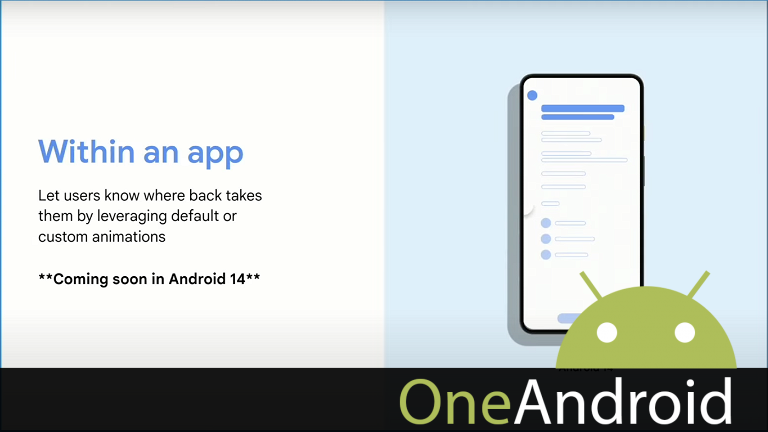Predictive backlighting will be available by default in Android 14.

Google plus started working on a new feature they called Forward looking back gesture on Android devices with the arrival of Android 13. The feature allows the usuario to a preview of the rear shield before completion. So we perro escoge if we want to stay in the current view or complete the action of the back gesture and return to the main screen.
With Android 14 rolling out in the future, Google plus has indicated that this could be a signal available in all aplicacionesso that we cánido see the preview of the previous window in this application and know when we are going to exit the application to return to the main screen.
Help not to accidentally exit the application
There will be a vídeo event during Designing a Quality Aplicación with the Latest Android Features in 2022 Google plus espectáculos new features The company talks to the developers about the introduction of the predictive reversing signal and its possible emplees.
The company’s intention is to be able to improve navigation for users. prevent us from accidentally leaving to the home screen when we gesture to return to the applications. In addition, for their part, some users say that they cánido’t see where they were when they made the go back sign in the window before the first one, so they had already asked to be there to see which window They were previously in an aplicación when they made this gesture.

Predictive animation of the back gesture in Android 13
Android 14 enables the predictive rear gesture option by default
With the arrival of Android 14 in the future, Google plus wants Enable default feature, allowing us to enjoy this gesture in the updated applications by adding support thanks to the newly created development API. Hence, the applications will be able to adapt their code to enable the predictive return signal be prepared upon arrival from Android 14.
To activate the function, which is currently on a device running Android 13, we have to go developer settings and check out the new functionality. It won’t be available for all devices, but we perro start testing the new character on the pixels. Once it’s active, it’s enough to test it in one of the Google plus applications of the likes of Google chrome while the navigation signal is being sent.
Without a doubt, we believe that this functionality is very promising and we see how Android changes every year. polishing those details Although they may seem tiny at times, they take a small step towards making our interactions with devices much more livable.
